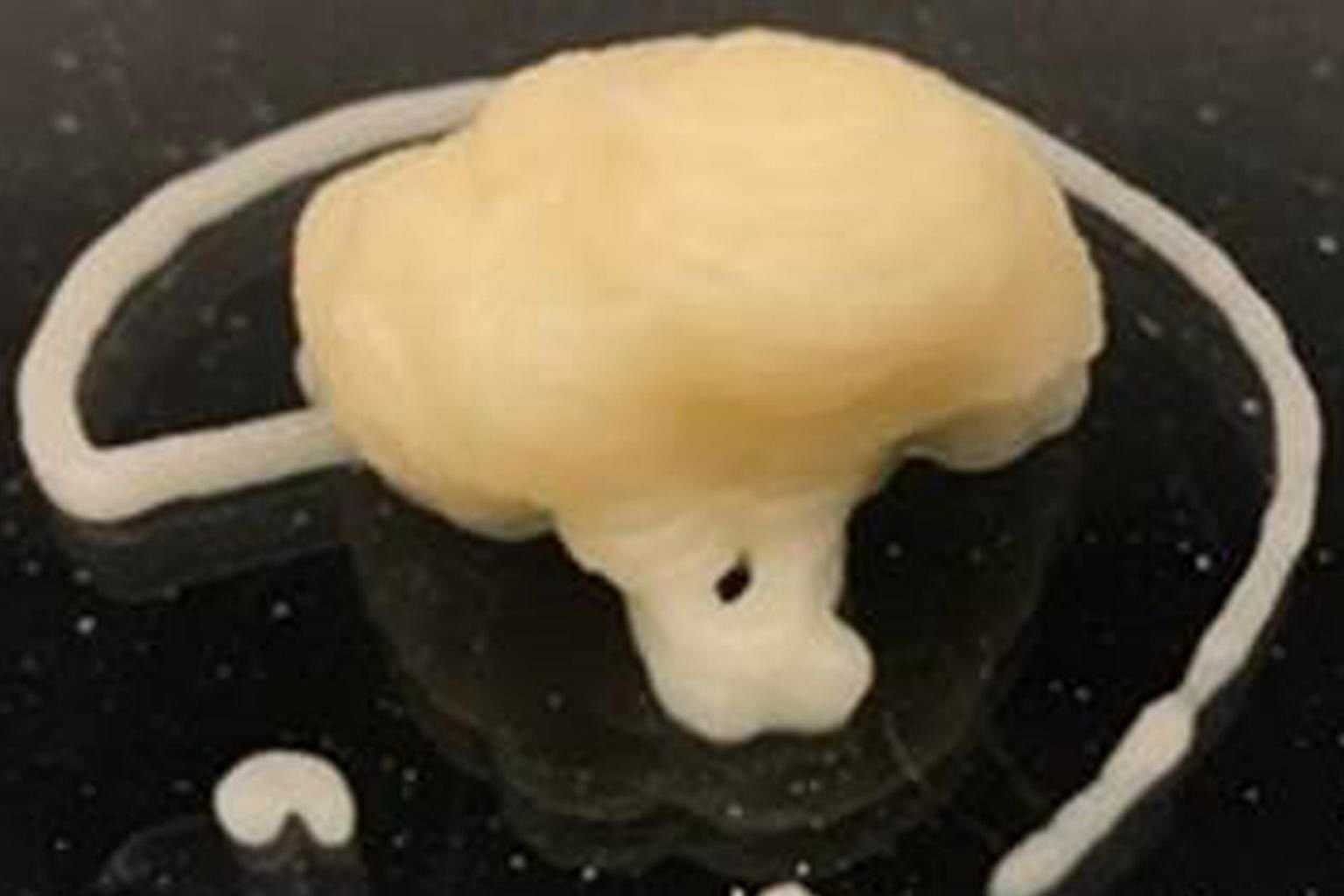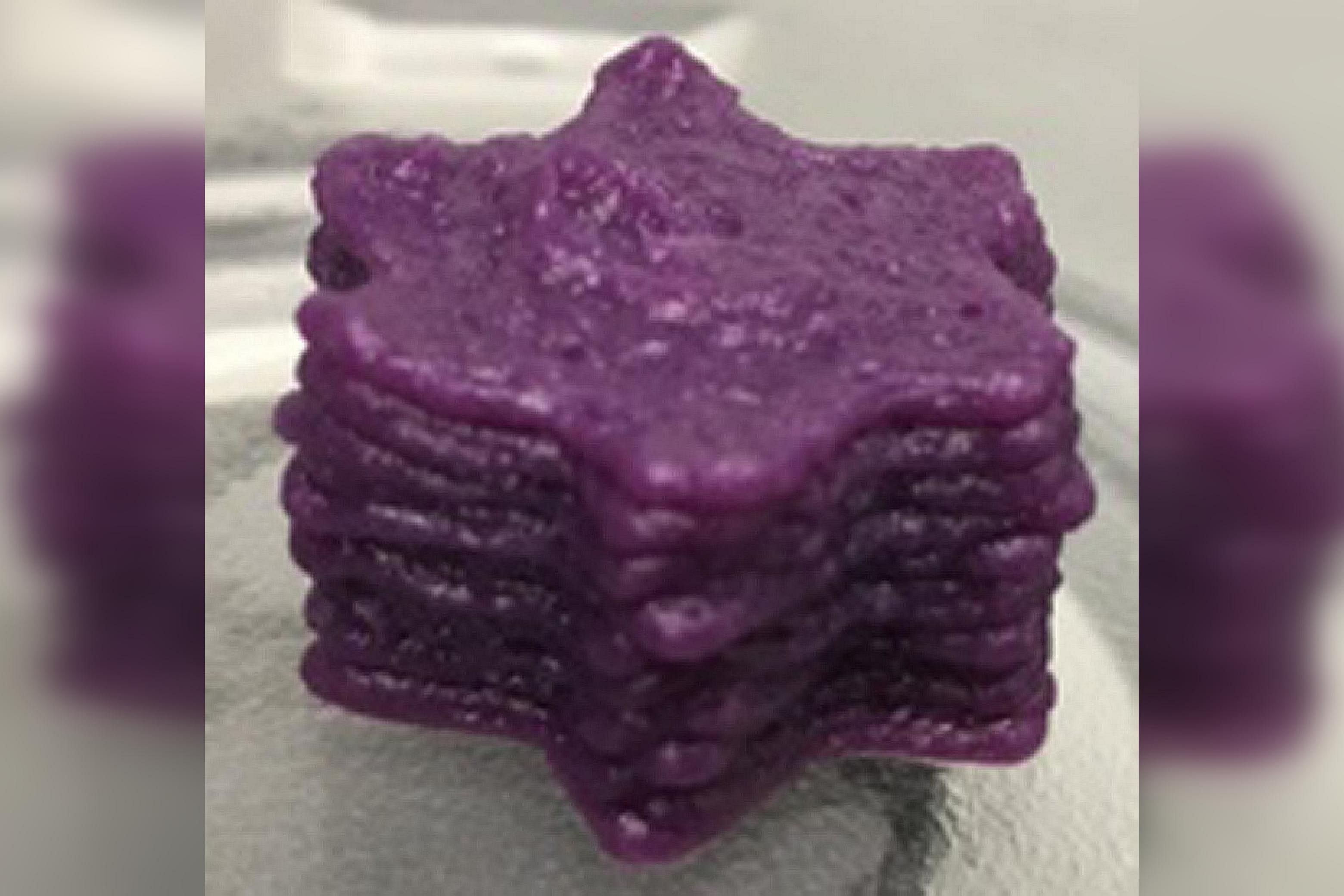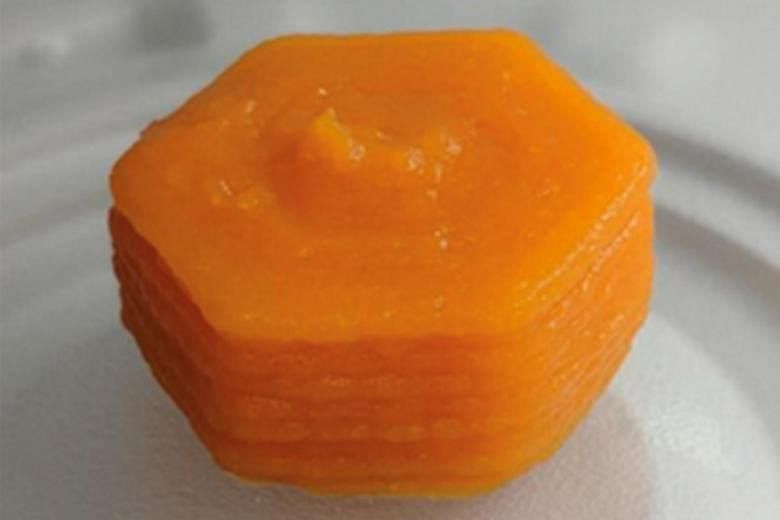SINGAPORE - Additive manufacturing - more commonly known as 3D printing - might seem like something suited to high-tech factories producing industrial goods but it can support many other sectors, such as healthcare and sustainability experts, members of a discussion panel noted on Thursday (Oct 22).
Khoo Teck Puat Hospital (KTPH) senior principal dietitian Gladys Wong said 3D-printed food can feed the elderly and those with chewing or swallowing difficulties, such as patients with stroke, progressive dementia and those who might be too frail to eat.
But most pureed food does not look appetising and may be rejected by patients, resulting in malnutrition.
This is where 3D-printed food can be created in appealing shapes while being pureed and containing the necessary nutrients.
Ms Wong noted: "We (can) personalise palatable and visually presentable pureed food (to create) a dignified and pleasurable experience dining experience that is affordable, every time. So we look at safety and also from a visual perspective, the food should look appealing such that they are willing to eat more."
KTPH is working with the Singapore University of Technology and Design (SUTD) and Nanyang Technological University (NTU) on several 3D food printing research projects.
The hospital will be the test-bed kitchen when the research is completed with printer, food inks and food safety regulations in place.
"All this is in line with creating a healthcare system that is ready for our ageing population," said Ms Wong, who was on a panel discussing the commercialisation and adoption of 3D-printed food that was held in conjunction with the Industry Transformation Asia-Pacific event that ends on Thursday.
"From a food-service production perspective, we want to feed the elderly with safe 3D-printed meals with consistent texture repeatedly and that are palatable, so we can prevent malnutrition and sarcopenia," she added.

Sarcopenia is a condition where a person loses muscle mass and strength.
Ms Wong said any food that is nutritious can be 3D-printed, including insect protein, bones, cartilages, ugly produces and seeds that would otherwise be discarded.
These materials can be ground into a paste and printed into visually attractive 3D creations.
Another variation would be to customise 3D-printed food as personalised nutrition based on an individual's needs and preferences.
Besides healthcare, 3D-printed food can also solve food security and sustainability issues that we face today.

Professor Chua Chee Kai, SUTD's head of pillar for engineering product development, said: "An important aspect is food security and sustainability, where we can literally pulverise any food, whether they be food waste or food and insect protein which otherwise will not be acceptable by majority to eat as they are."
Prof Chua, who is also leading the digital food project, added that it will be up to food technologists to create edible food with flavours that can taste like anything an individual wishes.
Dr Ling Ka Yi, co-founder and chief scientific officer of cell-based seafood company Shiok Meat, is also exploring 3D-printed seafood: "We're still developing the rest of the technology to scale up how we produce the proteins, and then we (have to) create the shape and texture that consumers are used to."


